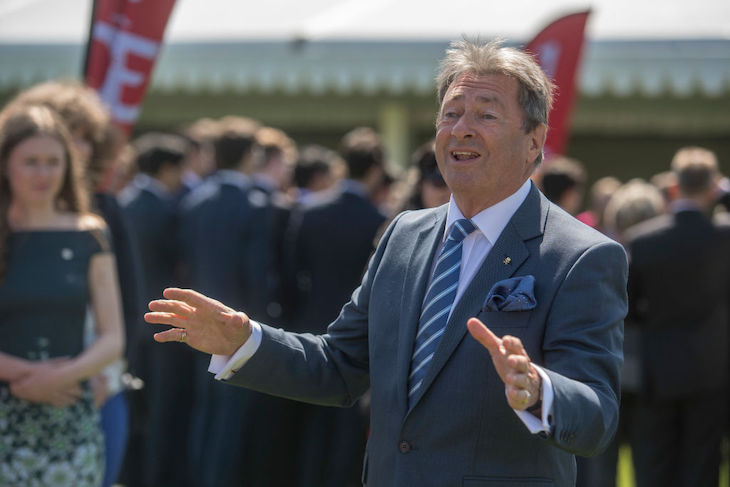Is rewilding, where nature is allowed to take its course, all it’s cracked up to be? Alan Titchmarsh, the nation’s joint favourite gardener along with Monty Don, appears to think not. In an intervention in the House of Lords’ horticultural sector committee inquiry, Titchmarsh said that rewilded gardens are bad news for wildlife.
‘With their greater plant diversity, domestic gardens offer sustenance and shelter to wildlife from March through to November,’ he told peers. ‘Nine months’ of nourishment. A rewilded garden will offer nothing but straw and hay from August to March. A four-month flowering season is the norm. Should a current fashionable and ill-considered trend deplete our gardens of their botanical riches, then we have presided over a diminution in biodiversity of catastrophic proportions.’
Woo. That’s telling ’em. Richard Bunting, of Rewilding Britain, has already urged Titchmarsh to have a rethink:
‘Simple actions such as letting wildflowers grow…can make a big difference and can work well alongside traditional gardening….Unfortunately Alan is picking the wrong fight.’
We are in danger of setting up a fake fight here. Alan Titchmarsh presides over a two acre wildflower meadow. He has been gardening organically for 40 years. He’s a pal of King Charles. I think he’s not a man to blitz greenfly with carcinogenic pesticides if he can get away with a nice garlic spray. He would probably top himself rather than buy a fake lawn.
Let’s instead focus on the real enemies of good gardening
Titchmarsh is, environmentally, on the side of the angels. But the problem with rewilding is, of course, if it becomes a dogma which obliges gardeners to give up cultivated space to weeds on the mere grounds that they are native to this soil.
As Titchmarsh observes, a well-tended garden which has a range of species can extend its flowering season by a matter of months. And what with bugs emerging earlier in spring, and hibernation sometimes disrupted, it’s useful if the flowering and berry-bearing season can be extended for the sake of bugs, birds, beasts and bees.
At any time of year, blitzing annoying pests with chemicals can have an effect on wildlife that feeds on them. It’s rare that I put myself forward as a peacemaker, being more of the kind of person who stands at the edge of any fray going ‘fight, fight, fight!’ but isn’t there scope for a bit of compromise here? It’s not a matter of giving up your entire garden to a hay meadow (though these are lovely things), but gardening to incorporate native species as well as exotics.
To take an obvious example, if you cultivate open-faced flowers rather than double ones – ‘bishop’ dahlias where the pollen is easily accessible to bees rather than the flamboyant Cafe au Lait sort – then that helps bees get at them. And some species attract insects while being very easy on the eye: I can’t get rid of the angelica in my parental garden, and I notice that it’s all over hoverflies. Buddleia is notoriously attractive to butterflies. Lavender is all over bees.
It’s possible, as Titchmarsh actually practices, to be friendly to wildlife as part of conventional gardening. Rewilding can work well as part of a large garden or estate, like those bits of parks that are given over to long grass, or as in the Knepp Estate (listen to the interview with its owner, Isabelle Tree with the cherishable Michael Berkeley the other day on Private Passions) where the soil really isn’t propitious for conventional farming. But it’s not an iron rule for domestic horticulture, let alone for the entire horticultural sector.
Rather than pitching the good against the best, let’s instead focus on the real enemies of good gardening. Anyone who covers a perfectly good garden with a concrete drive (put down paving stones with gaps for flowers if you have to park a car) or decking should have their garden taken away from them. And anyone who puts down a plastic lawn deserves to be shunned by society. On this, I think, we can all agree.







Comments